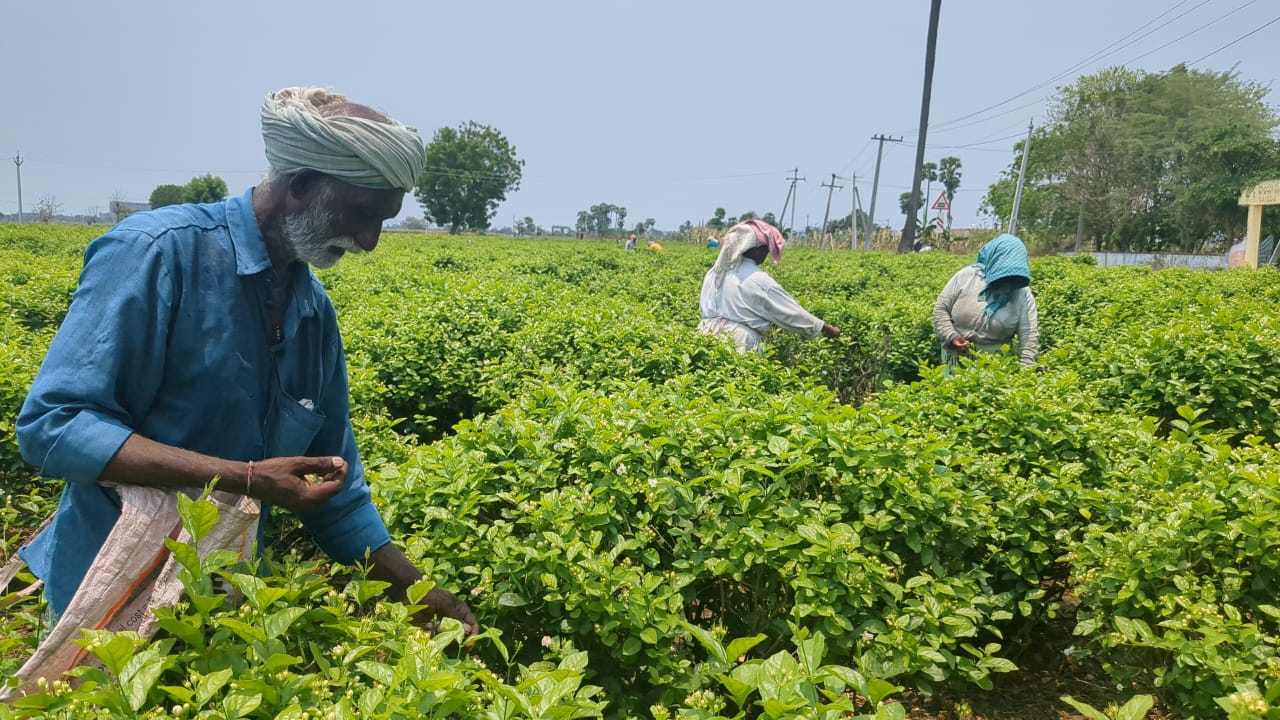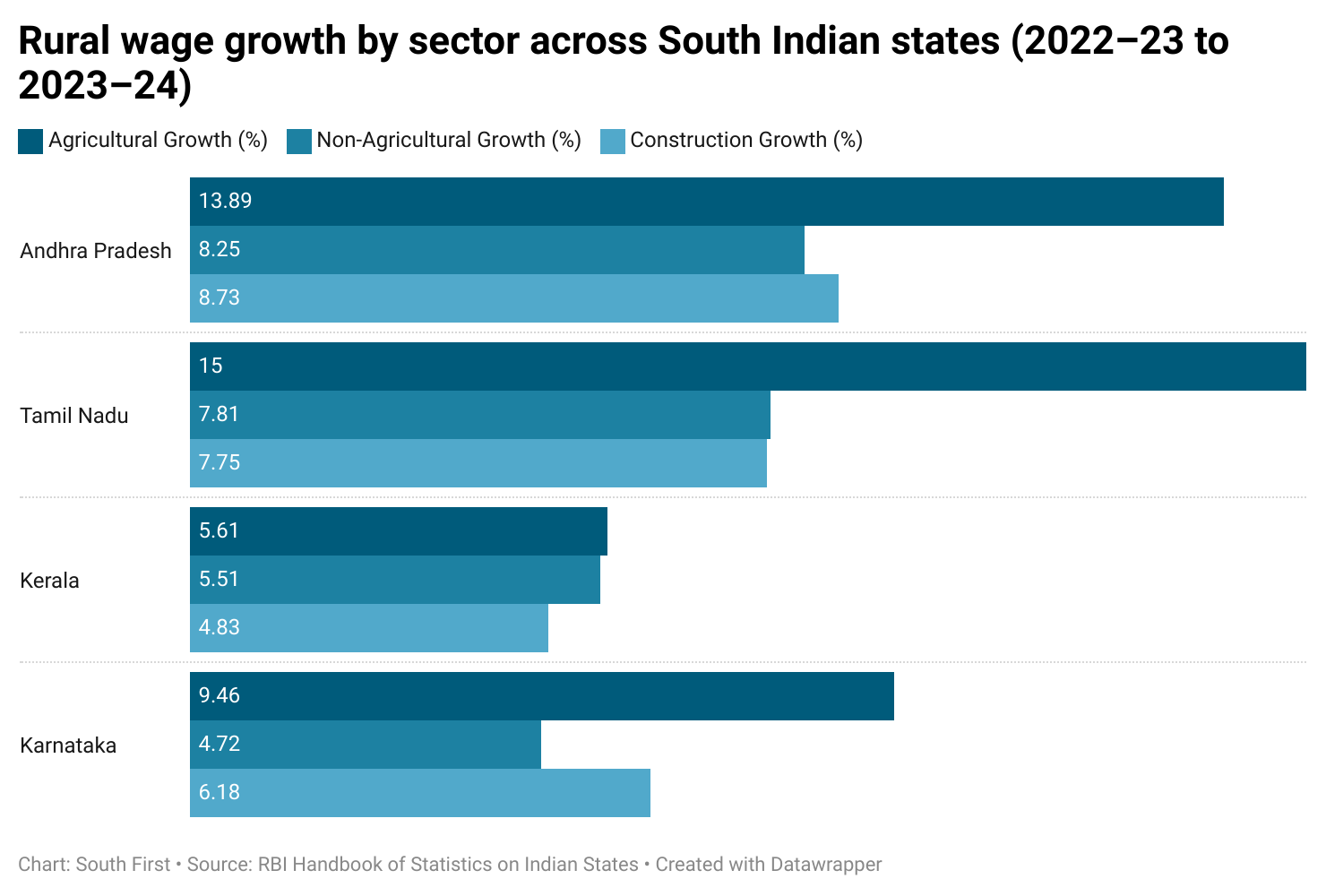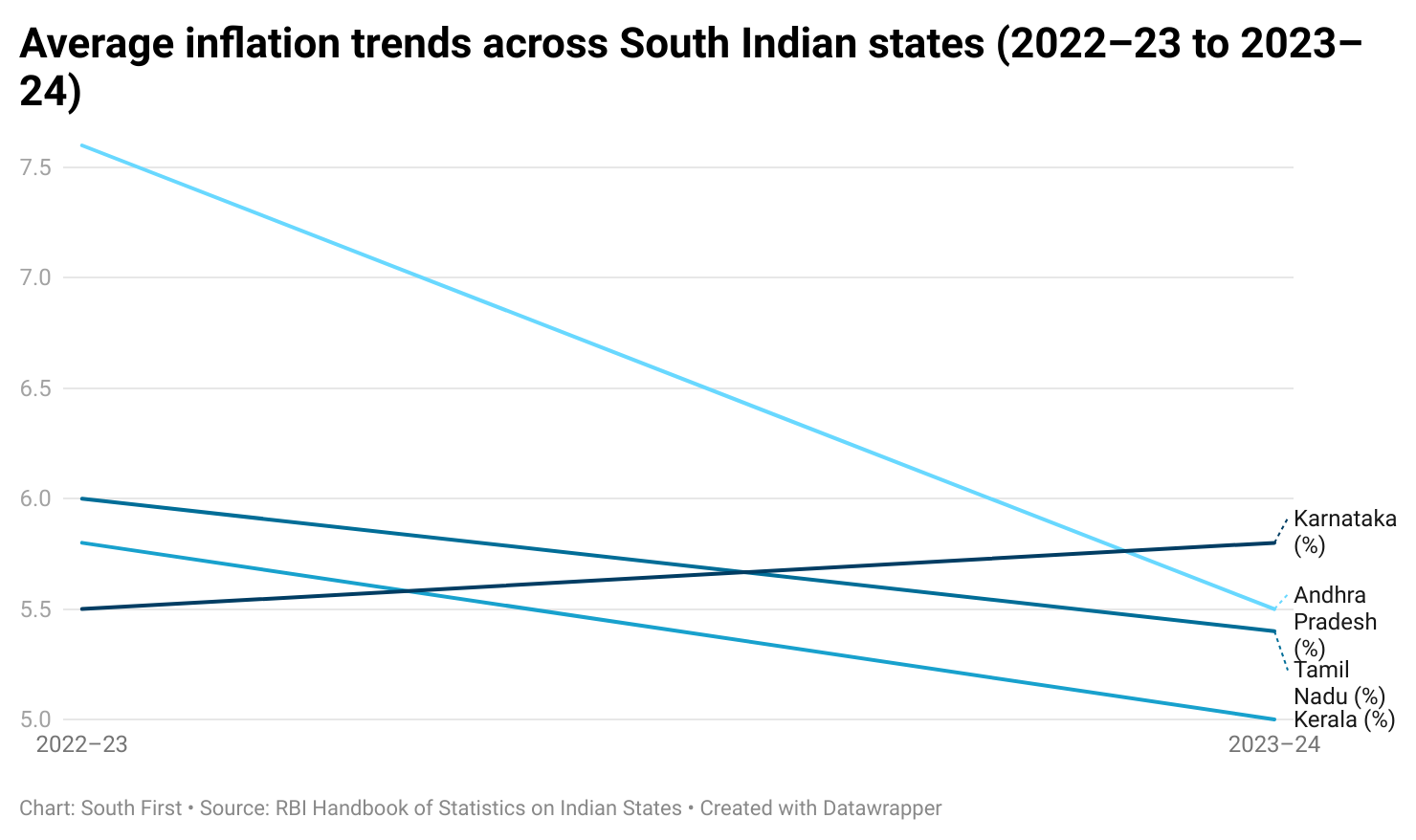Andhra Pradesh and Tamil Nadu lead the way in strong growth in rural wages across South Indian states, surpassing inflation in most cases.
Published Jan 01, 2025 | 1:07 PM ⚊ Updated Jan 01, 2025 | 1:07 PM

Rural wage growth has outpaced inflation across much of southern India, providing a boost to workers’ purchasing power, an analysis of the latest data from the Reserve Bank of India (RBI) shows.
In Andhra Pradesh, non-agricultural workers’ wages rose by 8.25 percent, from ₹374.5 in 2022–23 to ₹405.4 in 2023–24. Agricultural workers saw an even sharper increase of 13.9 percent, as their earnings grew from ₹384.4 to ₹437.8. Construction workers also benefited, with wages rising by 8.73 percent to ₹524.5.
Wage increases in Tamil Nadu followed a similar trajectory, with agricultural workers’ wages experiencing the highest growth among all categories – 15 percent, with daily earnings climbing from ₹470 to ₹540.6.
Non-agricultural labourers’ wages rose from ₹481.5 to ₹519.12 (7.81 percent), while construction workers saw a 7.75 percent increase, with daily earnings of ₹539.7 in 2023–24.

In Kerala, wages remain the highest in absolute terms across all categories, but yearly growth was lower compared to its neighbours.
Non-agricultural workers in the state earned ₹735, up 5.51 percent from ₹696.6 in 2022–23. Agricultural workers’ wages rose by 5.61 percent to ₹807.2, while construction workers’ earnings increased by 4.83 percent, to ₹893.6.
Similarly, in Karnataka, non-agricultural workers’ wages increased by just 4.72 percent, from ₹336.2 to ₹352.1, while agricultural and construction workers’ wages rose by 9.46 percent and 6.18 percent, to ₹415.4 and ₹457.6, respectively.
All the wage data pertains to men only. Data for Telangana was unavailable.
While the strong yearly growth in wages across South India paints a positive outlook, it is only half the story without considering the impact of average inflation (CPI) and its effect on real purchasing power.
In 2023–24, most South Indian states experienced a decline in inflation rates, possibly increasing the real purchasing power of rural workers when combined with wage increases.

Andhra Pradesh again leads the pack, with inflation falling sharply from 7.6 percent in 2022–23 to 5.5 percent in 2023–24. Similarly, Tamil Nadu’s inflation dropped from 6.0 percent to 5.4 percent.
The combination of strong wage growth and a sharp decline in inflation points to higher purchasing power.
Kerala also saw inflation decline, dropping from 5.8 percent to 5.0 percent. However, the state’s slower wage growth meant that the real gains for workers are likely more modest.
Nevertheless, the state still leads the pack with the highest wages, almost double that of its neighbours in some cases, and hence may still provide better purchasing power in absolute terms.
Karnataka was again an outlier, with inflation rising slightly rather than declining, from 5.5 percent to 5.8 percent. Combined with the state’s modest wage growth, this uptick in inflation could possibly have eroded real income gains.
(Edited by Dese Gowda)
